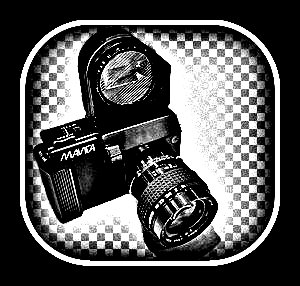
Sony Mavica Prototypes & Early Models (1987–1990)

About these early Mavicas:
These early “Mavica” cameras were not digital as we know them today,
but rather electronic still video cameras that recorded analog still
frames to 2" video floppy disks (Video Floppy / Mavipak). They were a
key stepping stone to later digital Mavicas and introduced removable
electronic media and instant image review to photograpy workflows.

[Captured On Floppy]
Historical Context
- Era: 1987–1990
- Significance: The first Mavica devices were still video cameras (SVCs) that recorded analog frames on 2" video floppy disks, paving the way for later digital Mavicas.
- Industry Role: Early consumer/professional devices using removable electronic media — historic milestones in imaging.
1. Sony Mavica Prototype (1981)
- Debut: Announced August 1981 (press/demo)
- Status: Proof-of-concept, never sold
- Storage: 2" video floppy (Mavipak)
- Sensor: CCD, B&W, ~570 × 490 analog
- Output: Analog video signal (no digital files)
2. Sony Mavica Model 1 (MVC-A7AF) [1987]
- Release: 1987 (limited/commercial, Japan)
- Description: First commercial still-video camera from Sony
- Sensor: ~570 × 490 B&W CCD (analog)
- Lens: Interchangeable (50mm f/1.4)
- Storage: 2" Video Floppy (~50 frames)
- Output: NTSC composite video
3. Sony ProMavica MVC-5000 [1988]
- Release: 1988 — professional / news use
- Sensor: ~570 × 490 color CCD (analog)
- Lens: Interchangeable (C-mount options)
- Storage: Video Floppy (~50 images/disk)
- Output: NTSC/PAL composite, usable with printers/broadcast gear
4. Sony ProMavica MVC-7000 [1989]
- Release: 1989 — enhanced pro model
- Features: Improved color reproduction, better flash support, SLR-style controls
5. Sony ProMavica MVC-C1 [1989–1990]
- Release: 1989–1990 — compact, fixed-lens model
- Lens: Fixed 10–40mm (3x), autofocus
- Use: Business, education, ID cards, documentation
6. Sony ProMavica MVC-F1 [1989–1990]
- Release: 1989–1990 — consumer-friendly compact
- Sensor: ~570 × 490 color CCD
- Lens: Fixed zoom, autofocus
- Legacy: First Mavica to target the mass consumer market
Common Technical Specifications (1987–1990)
Storage: 2" Video Floppy Disk (Mavipak / VF)
Image Type: Analog video frame (~0.3 MP equivalent)
Shots / Disk: Up to ~50
Output: NTSC / PAL composite video (no digital files)
Batteries: Proprietary rechargeable packs or AA (model-dependent)
User Experience
- Shooting: Compose and shoot like an SLR or point-and-shoot; image saved as a single video frame.
- Playback: Insert VF disk into camera/viewer to display on TV or monitor.
- Image Quality: TV-frame quality — good for instant review, ID cards, news use.
- Portability: SLR models were larger; F1/C1 models more compact and portable.
Legacy & Impact
- Revolution: Introduced electronic still photography to a broad audience.
- Stepping Stone: Normalized removable media and instant review — precursor to consumer digital cameras.
- Collector Value: Early models (MVC-A7AF, MVC-5000, MVC-F1) are sought-after by collectors and historians.
- Influence: Direct influence on later 3.5" floppy Mavicas and subsequent digital cameras.
Comparison Table
| Model | Year | Lens | Target | Res | Storage | Note |
|---|---|---|---|---|---|---|
| Prototype | 1981 | Fixed | Demo | B&W | Video Floppy | First concept |
| MVC-A7AF | 1987 | Interchangeable | Pros | B&W | Video Floppy | First commercial |
| MVC-5000 | 1988 | Interchangeable | Professional | Color | Video Floppy | News/media |
| MVC-7000 | 1989 | Interchangeable | Professional | Color | Video Floppy | Improved color/flash |
| MVC-C1 | 1989 | Fixed Zoom | Business/Edu | Color | Video Floppy | Point-and-shoot |
| MVC-F1 | 1989–90 | Fixed Zoom | Consumer | Color | Video Floppy | Compact |
Manual & My Opinion
Download the official manual (PDF) — updates for manuals/tech coming soon.
My Opinion: The early Sony Mavicas (1987–1990) were groundbreaking electronic still video cameras that bridged film and digital photography. They recorded analog frames to 2" video floppies rather than digital files. While image quality was limited, their instant-review workflow and removable media foreshadowed the digital revolution. These models are historically important and prized by collectors for pioneering consumer electronic imaging.
 |
